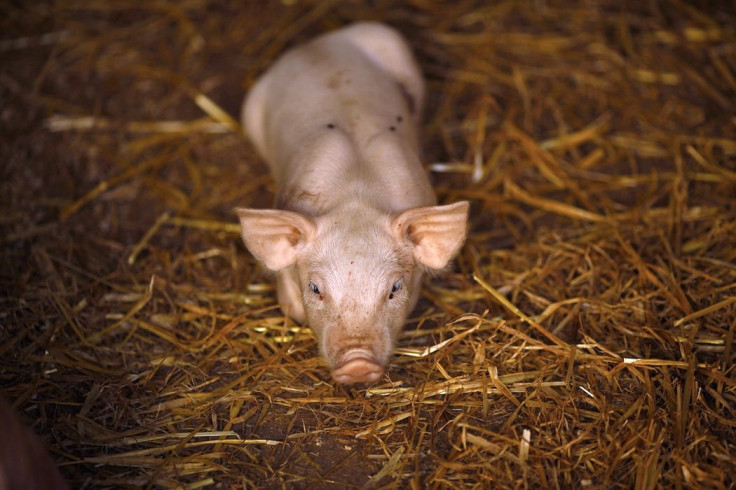Scientists Sequence Entire Pig Genome in Breakthrough That Could Combat Human Disease

Scientists announced Wednesday that they have mapped the entire genome of the domestic pig, revealing that besides providing tasty bacon and sausages, the animal may also be useful in fighting human diseases.
The study published in the journal Nature found that pigs and humans share more than 100 DNA mutations that have previously been linked to diseases like obesity, diabetes, dyslexia, Parkinson's and Alzheimer's, according to US and European researchers.
"In total, we found 112 positions where the porcine protein has the same amino acid that is implicated in a disease in humans," researchers wrote.
Researchers said that because pigs share many of the same complex genetic diseases as humans, the animals would serve as excellent models for studying the underlying biology of human disease.
"We have the chance to study (in pigs) how these genes interact with others to cause obesity, diabetes or other diseases," said Denis Milan, head of animal genetics at France's National Institute for Agricultural Research, according to AFP.
"This suggests that for some studies, including testing drugs and therapies, pigs may be a useful model for predicting outcomes in humans," added co-researcher Alan Archibald from the University of Edinburgh.
A domestic pig breed, the Sus scrofa domesticus, is already being used extensively in medical research because of its anatomical similarity to humans, and pig heart valves have been used by doctors to replace faulty human ones.
"Now we can use pigs for looking at genetic diseases" as well, said co-author Lawrence Schook from the University of Illinois, according to AFP, which could include "making genetically modified animals to create human disease models."
Archibald told Reuters that understanding of the new genome analysis would take time, the benefits of the latest sequencing flow through more quickly in agriculture than for human medicine because scientists can use the genome map as a reference tool for "selective breeding" to increase the animal's resistance to diseases.
Scientists can use the new genome map to improve meat production by breeding a new generation of super-pigs that will grow faster, survive longer, produce more offspring and yield more meat for less feed.
"This new analysis helps us understand the genetic mechanisms that enable high-quality pork production, feed efficiency and resistance to disease," Sonny Ramaswany, director of the U.S. Department of Agriculture's National Institute of Food and Agriculture said, according to Reuters.
Scientists in the sequencing project compared the domestic pig's genome to that of the wild boar, human, mouse, dog, horse and cow.
They also found that clear genetic distinction between European and Asian pigs. Researchers explained that the ancestor of the domestic pig is most similar to that of the modern wild boar, which first emerged in Southeast Asia and then migrated across Eurasia. Therefore, because the European and Asian have been separated for so long, they have become almost sub-species.
Researchers wrote that the latest finding adds to evidence that pigs were independently domesticated in western Eurasia and East Asia.
A recent study also revealed that pigs had the most olfactory receptor genes, which highlights the importance of smell in the scavenger animal's lifestyle, and that pigs also had fewer bitter taste receptors meaning that "pigs can eat food that is unpalatable to humans," which is one of the reasons why pigs have become such a highly valued farm animal.



























